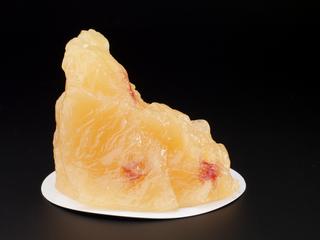Panoramic Mio-Mask, clear medical-grade disposable face mask
Panoramic Mio-Mask, clear medical-grade disposable face mask developed during the COVID-19 pandemic to aid lip readers and others who benefit from seeing the mouth area and full range of facial expressions when communicating, LJA MIERS & Co. Ltd, 2022-2023
More
Face coverings have become one of the defining symbols of the COVID-19 pandemic. Recommended by health experts and mandated by governments to slow the spread of the virus, the near ubiquity of opaque masks – particularly in healthcare settings – has made communicating more challenging for many people.
According to the Royal College of Speech and Language Therapists, there are up to 14 million people living with communication difficulties in the UK. As well as muffling sound, opaque masks prevent lip-reading and obscure facial movements critical to expressing both linguistic information and emotions in sign language. But it is not only people who are D/deaf or hard of hearing who have been disadvantaged by their widespread use. Being able to see facial expressions makes it easier to understand non-verbal cues, which is particularly important for autistic people and those with learning disabilities or cognitive impairment.
The Panoramic Mio-Mask was developed by the Clinical Engineering Innovation Department at Cambridge University Hospitals NHS Trust (CUH) in response to a need identified by a nurse who wears hearing aids. The project began in April 2020 after Junior Sister Emma Ayling – who relied on lip-reading in her role managing a busy outpatient unit at Cambridge’s Rosie Hospital – highlighted the requirement for a clear mask that would improve communication between patients and staff.
Discovering there was nothing on the market offering the level of protection and function required, CUH partnered with St Neots-based manufacturer LJA Miers to refine and bring the product to market.
The Mio-Mask provides the same level of bacterial filtration and splash protection as the Type IIR surgical masks typically worn in medical settings. It was officially registered with the Medicines and Healthcare Regulatory Agency (MHRA) as a CE marked medical mask in March 2021, meaning it can be used across the NHS and Europe.
With an anti-fog membrane and no metal components, it can be even worn during MRI scans and in operating theatres where clear communication between surgical teams is vital. The fact that the mask offers a panoramic view of the wearer’s entire lower face makes it particularly beneficial in speech and language clinics.
- Measurements:
-
overall: 130 mm x 180 mm x 70 mm,
- Materials:
- polyester , polypropylene , polyurethane , elastane and polyethylene terephthalate
- Object Number:
- 2023-1163/1
- type:
- face mask





